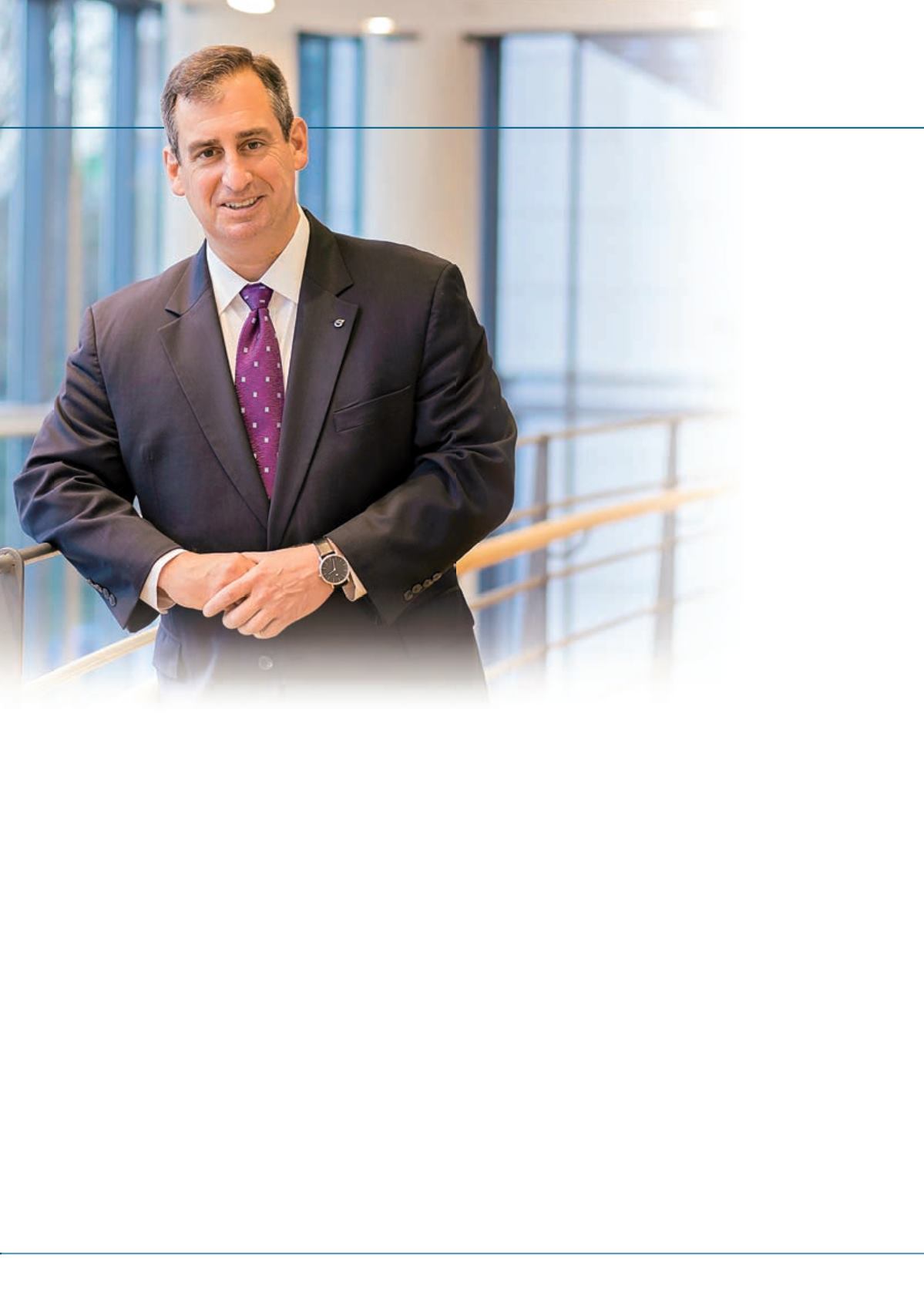
15
october 2014
international
construction
INTERVIEW
New head at Volvo
CEO of Volvo
Construction
Equipment,
MartinWeissburg.
But todayVolvo says the combined sales of its twobrandsmake
itmarket leader inChina, and theway it has rolledout theSDLG
brand across the worldmakes that joint venture China’s leading
equipment exporter. It is not just emergingmarketswhere SDLG
machines are being sold. This year has seen them go on sale in
NorthAmerica aswell.
And Mr Weissburg was keen to dispel the perception that
SDLGwas just about building cheapermachines. “SDLG is not
just the Volvo value brand. It is a brand with value in of itself,
and there’s an important distinction there,” he said. “By virtue of
our two strongbrands – and a thirdbrandnowwithTerex trucks
as well – we have the benefit of approaching the market from a
cost, benefit, feature and value orientation. It is a very important
part of our strategy and a very successfully executed part of our
strategy.
“We don’t’ see too much risk of cannibalisation – one brand
against the other. I’m sometimes asked if I’m I worried about too
manyChinese exports having an impact on pricing of theVolvo
brand.The answer there is no, becausewe are the leadingChinese
exporter of construction equipment and this really is our strategy.
“There is even more value as an export product because it is
coming through theVolvoConstructionEquipment distribution
network.With that there is the critical mass of parts and service
availability and that brandpromise.This iswhere I knowwehave
a comparable and competitive advantage through the strength of
our distribution, andwe’re seeing very good growth.”
Rental approach
Around the time the Terex trucks acquisition was announced,
the Volvo Group also announced it would be selling its Volvo
Rents business.This divisionwas launched in 2001 byVolvoCE
as a pure equipment rental business, and was thenmoved to sit
separately under the group structure as a standalone business in
2011.
An acquisitive division, by the time of the divestment
announcement, it was reckoned by
iC
’s sister magazine
International Rental News
to be the fifth largest rental franchise
inNorthAmerica.
The rationale for selling it was similar toVolvo’s divestment of
its Aero business in 2012, in that it wanted the group to have a
tighter core focus onmachinerywithdiesel engines at their heart.
And while the US$ 1.1 billion selling price will have swollen
the company’s coffers, where does it leave Volvo CE in terms of
making in-roads into the globally expanding equipment rental
sector?
“The rental business is about selling to independent rental
housesnowweno longerownVolvoRents, andworkingwithour
distributionnetwork to feed their rental fleets to provide services
to the customers,” saidMrWeissburg.
He continued, “We approach this primarily with and through
our Volvo CE distributors. They typically have in-house rental
fleets and/or leasing companies to provide mid-term, long-term
and even short-term rentals, rental purchaseoptions and soon. In
addition, we as Volvo sell through our dealers to the large rental
houses aswell.
“So we utilise both channels, but the traditional equipment
distributor is increasingly coming into the rental business aswell.
We as the equipment supplier are very well aligned to support
them in that process. Not just for the right cost/benefit spec of
the product, but also as the VolvoGroup, we have invested very
heavily in the Volvo Financial Services (VFS) company, with
about a US$ 20 billion portfolio today.We use VFS to provide
the liquidity toour dealers tofinance their rental fleets.
“It is very much a demand coming from our customers, end
users, the contractors, so it is incumbent on us as theOEM and
distributionvalue chain tohave the tools and resources toprovide
this. It is amarket segment that is growing, is very profitable and
value added for the OEM-distributor and very valuable to the
end-user. I thinkwewill seemore of this, but how it shifts to the
emergingmarkets, only timewill tell.”
And the expansion into emerging markets is something Volvo
has managed well in recent years. Its acquisition of Ingersoll-
Rand’s road building business brought with it a factory in India,
while inChina it has its interest inSDLG aswell as aVolvoplant.
InBrazil it producesmachines under both theVolvo and SDLG
brands, while in Russia it opened an excavator plant in Kaluga
lastMay.With the BRICs covered and those factories supplying
neighbouring countries, isVolvo’s footprint complete?
“I wouldn’t say the footprint is complete, but it is very good,”
said Mr Weissburg. “Our industrial footprint is always going
through evolution and changes as themarkets change – not just
with business cycles, but as wewant to increase local content. So
evenwithin a country, our footprintmight change as we increase
local content andpurchasingof components. But Iwould sayour
coverage today from an industrial standpoint is where we want
it tobe.
“It is important to Volvo Construction Equipment that we be
local and we be close to our customers. To be good in China,
you have to be Chinese – the same for India, Brazil, andRussia.
It’s important to us from a sourcing standpoint, and availability
standpoint and local content, tobeveryclose toour customers for
speedof delivery and tohave that global spread.”
So despite the difficult market conditions at the moment, Mr
Weissburg paints anoptimistic picture ofVolvoCE’s future.
iC


